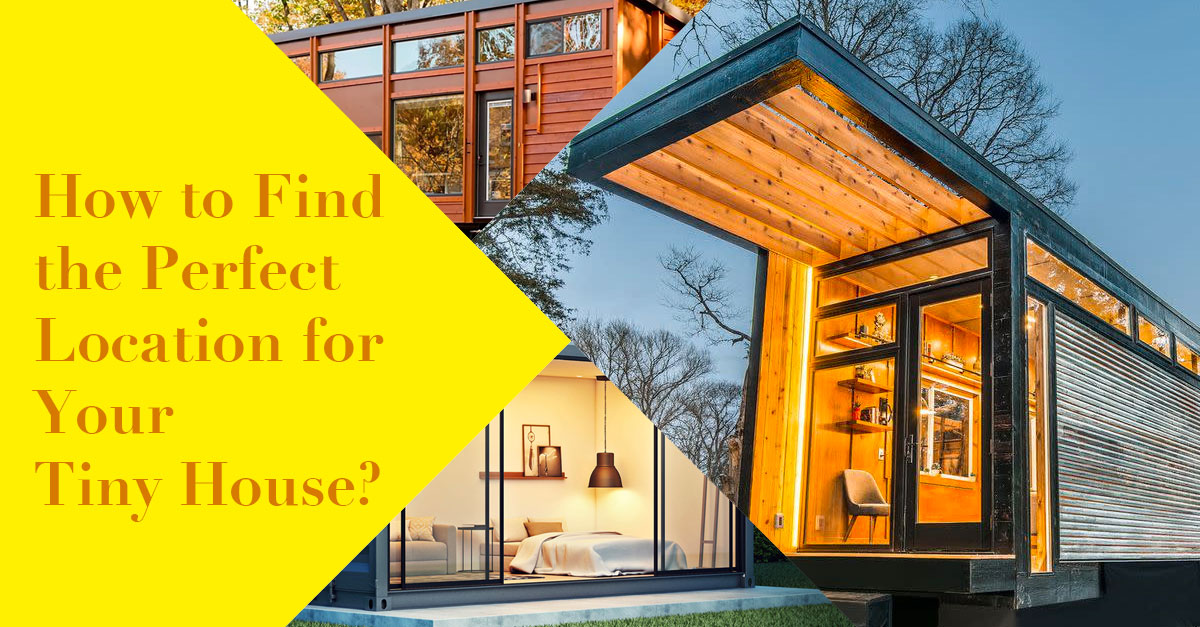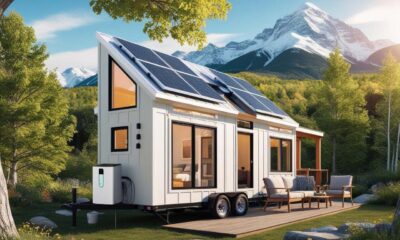Diy
How to Find the Perfect Location for Your Tiny House?

Finding the perfect location for your tiny house is a crucial step in realizing your dreams of living in a compact and efficient space. Whether you’re planning to settle down permanently or embark on a mobile tiny house adventure, choosing the right spot is essential for your comfort, convenience, and overall satisfaction. In this comprehensive guide, we will explore various factors to consider when seeking the ideal location for your tiny house. From zoning regulations and access to utilities to lifestyle preferences and budgetary considerations, we will cover everything you need to know to make an informed decision. Let’s dive in!
How to Find the Perfect Location for Your Tiny House
Finding the perfect location for your tiny house involves careful consideration of several factors. By keeping these essential elements in mind, you can ensure that you find the most suitable spot for your tiny home.
1. Evaluate Local Zoning and Building Codes
- Research local zoning and building codes to ensure your tiny house is legally compliant.
- Look for areas that have favorable regulations or exemptions for tiny houses.
- Check if there are any minimum square footage requirements or restrictions on dwelling types.
2. Consider Access to Utilities
- Determine the availability and accessibility of essential utilities such as water, electricity, and sewage.
- Explore alternative options such as solar power or composting toilets if utilities are limited.
- Calculate the costs of connecting to existing utility lines or installing off-grid systems.
3. Assess the Physical Landscape
- Take into account the natural topography, soil quality, and drainage of potential locations.
- Ensure the land is stable and suitable for building foundations or parking your tiny house.
- Consider the exposure to natural elements like wind, sunlight, and potential hazards like flooding or landslides.
4. Evaluate Safety and Security
- Research crime rates and the overall safety of the neighborhood you are considering.
- Consider proximity to emergency services and the availability of fire protection systems.
- Assess the durability of your tiny house to withstand local weather conditions or natural disasters.
5. Consider Your Lifestyle Preferences
- Determine the amenities, services, and facilities that are important to you.
- Reflect on your preferred proximity to urban areas, nature, or community centers.
- Consider the noise level, privacy, and overall ambiance of potential locations.
6. Factor in Accessibility
- Assess the ease of access to major transportation routes, highways, and public transportation.
- Consider the distance to grocery stores, healthcare facilities, and other necessary amenities.
- Evaluate the availability of parking or storage options for your tiny house.
7. Research Community and Neighborhood Regulations
- Investigate any homeowners’ associations (HOAs) or community restrictions that may affect your tiny house plans.
- Ensure that the community aligns with your values, interests, and desired lifestyle.
- Consider joining tiny house communities or locating in areas that are receptive to alternative housing options.
8. Evaluate Cost of Living and Affordability
- Research the cost of living in different areas, including taxes, utilities, and other expenses.
- Consider the long-term affordability of the location, factoring in potential future developments or changes.
- Explore financing options or consider purchasing land to secure your tiny house’s location.
9. Consult with Professionals and Experienced Tiny House Owners
- Seek advice from professionals such as real estate agents, builders, or tiny house consultants.
- Connect with the tiny house community and learn from the experiences of other tiny house owners.
- Attend workshops, conferences, or join online forums to gather valuable insights and recommendations.
FAQs about Finding the Perfect Location for Your Tiny House
Can I legally park my tiny house anywhere?
Yes, the legality of parking a tiny house depends on local zoning and building codes. Research the regulations in your desired area to ensure compliance.
Do I need a building permit for my tiny house?
In most cases, you will need a building permit for your tiny house. Check with local authorities to determine the specific requirements.
Can I live in a tiny house off-grid?
Living off-grid in a tiny house is possible, but it requires careful planning and consideration of alternative energy and waste management systems.
Should I buy land or rent a spot for my tiny house?
The decision to buy land or rent a spot depends on your long-term plans, budget, and personal preferences. Consider the pros and cons of each option.
Are there specific areas that are more welcoming to tiny houses?
Yes, some areas have embraced the tiny house movement and have more favorable regulations and communities that cater to tiny house living.
How can I ensure the security of my tiny house?
Invest in security measures such as robust locks, surveillance systems, and motion-activated lights. Additionally, choose a safe and secure location.
Finding the perfect location for your tiny house is a journey that involves considering various factors, from legal requirements and access to utilities to lifestyle preferences and affordability. By evaluating these elements and conducting thorough research, you can discover the ideal spot that aligns with your vision of tiny house living. Remember to consult with professionals, seek advice from experienced tiny house owners, and explore different communities to gain valuable insights. With careful planning and consideration, you’ll be on your way to creating your dream tiny house lifestyle.











